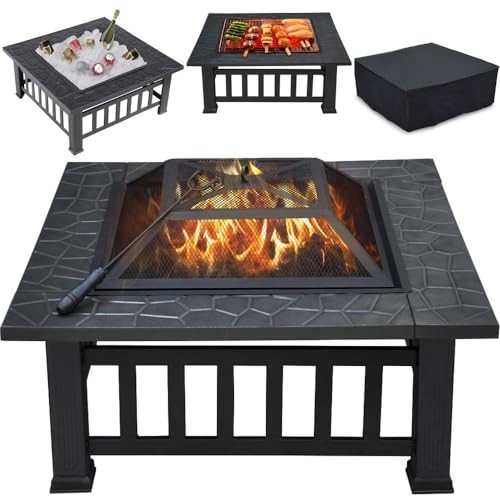fireplace-uk0527
fireplace-uk0527
The 10 Most Scariest Things About Buy Fireplaces UK

A Comprehensive Guide to Buying Fireplaces in the UK
Fireplaces have actually long been a centerpiece in homes, providing both warmth and aesthetic appeal. In the UK, the varied climate makes fireplaces an essential feature in numerous houses. Whether one is looking for a functional heating service or a stylish centerpiece, comprehending the various types of fireplaces and the factors to think about when buying is important. This article will supply an in-depth introduction of the types of fireplaces offered, factors to consider before purchasing, and answers to often asked questions.
Types of Fireplaces
When thinking about the purchase of a fireplace, one need to comprehend the huge selection of choices offered. Here’s a breakdown of the typical types of fireplaces in the UK:
| Type of Fireplace | Description | Pros | Cons |
|---|---|---|---|
| Open Hearth | Traditional fireplace; wood-burning. | Traditional appeal, excellent heat circulation. | Ineffective, needs more upkeep. |
| Wood-Burning Stove | Enclosed wood-burning unit created for performance. | High-efficiency heating, variety of styles. | Needs area for wood storage, may require chimney lining. |
| Gas Fireplace | Uses natural or lp gas for heating. | Easy to utilize, low maintenance. | May require professional setup, can be less warm than wood. |
| Electric Fireplace | Uses electrical energy to create heat and flames. | Simple setup, doesn’t need a chimney. | Typically less effective for heating, may do not have the ambiance of genuine flames. |
| Bioethanol Fireplace | Burns bioethanol for a clean-burning flame. | No venting needed, modern design. | Fuel can be costly, less heat output. |
| Pellet Stove | Uses compressed wood or biomass pellets. | Effective and ecologically friendly. | Requires electrical energy to run, requires regular feeding and cleansing. |
Factors to consider Before Buying a Fireplace
Before devoting to the purchase of a fireplace, numerous essential elements should be considered:
-
Purpose: Determine whether the fireplace will serve primarily for heating or as an aesthetic addition to the room.
-
Type of Fuel: Consider the type of fuel that best fits your requirements– wood, gas, electricity, or alternative choices.
-
Setup Costs: Assess the overall setup expense, which may include chimney work, flue setup, or additional modifications to the home.
-
Area Availability: Check the area readily available and guarantee that the selected fireplace fits easily within the designated location.
-
Design and style: Choose a style that complements the existing design of your home, whether modern, rustic, or traditional.
-
Maintenance: Understand the upkeep requirements related to each type of fireplace. For example, wood-burning options may need regular cleaning of flues and chimneys.
-
Energy Efficiency: Assess the energy efficiency of the fireplace, particularly if it will serve as the primary heating source.
-
Regional Regulations: Be aware of local policies and standards concerning installations, specifically for wood-burning and gas home appliances.
FAQs about Buying Fireplaces in the UK
1. What is the very best type of fireplace for an environment-friendly home?
Answer: A wood-burning range or a pellet stove can be fantastic eco-friendly options, as they use sustainable resources. Bioethanol fireplaces are also clean and produce no harmful emissions.
2. Do I require a chimney for a gas fireplace?
Response: Most gas fireplaces need venting to the outdoors, which can be through an existing chimney or via a direct vent system that vents through the wall.
3. How do I determine the right size of fireplace for my space?
Answer: The size will depend on the room’s square footage and the kind of fireplace. Usually, a specialist can compute the BTUs (British Thermal Units) needed based upon the room size.
4. What is the average cost of installing a fireplace in the UK?
Response: Installation costs can vary extensively depending upon the kind of fireplace and its complexity, varying from ₤ 500 for electric fireplaces to ₤ 5,000 for some customized setups of wood stoves or gas systems.
5. Are electric fireplaces safe to use?
Answer: Yes, electric fireplaces are generally very safe, as they do not produce genuine flames or emissions. However, similar to any electrical appliance, they need to be used according to producer guidelines.
The choice to buy Fireplaces a fireplace in the UK is multifaceted and depends on many factors, consisting of style, performance, function, and setup needs. By understanding the different types of fireplaces and assessing individual requirements and preferences, one can make an educated option that enhances their home and experience. With the info supplied, prospective purchasers can embark on their journey to find the best fireplace that combines functionality with the comfort and warmth that this quintessential feature provides.
In summary, investing in a fireplace is more than just choosing a heating alternative; it is about adding character to a home while ensuring convenience for years to come.



